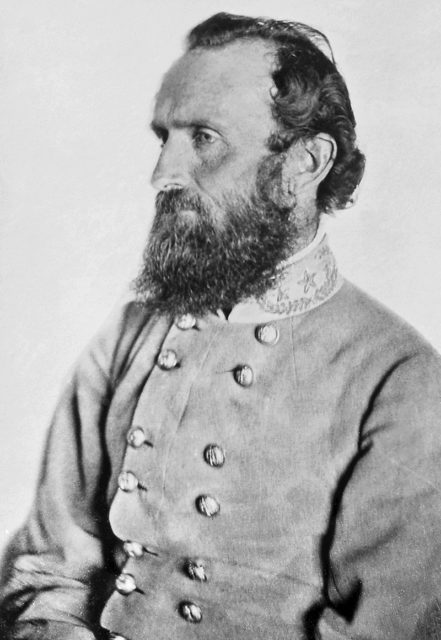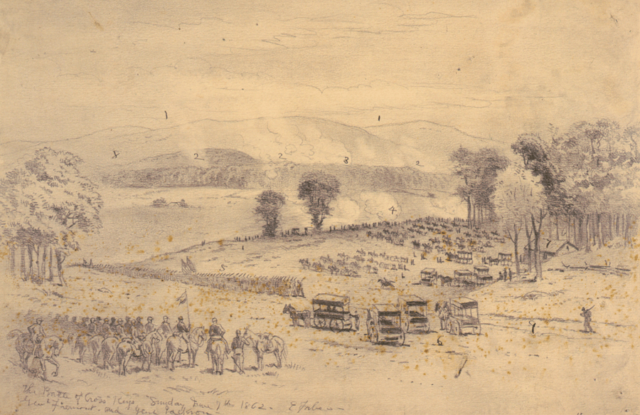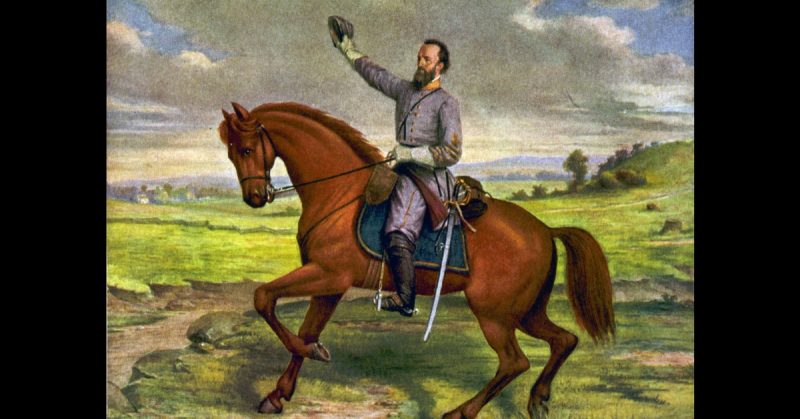Stonewall Jackson was one of the most daring and eccentric commanders in American history. Nowhere was his leadership and tactical greatness better displayed than in the Valley Campaign.
In this campaign, Jackson kept four Union armies from combining against him. He defeated each one, in turn, inflicting heavy losses against forces that outnumbered him. He caused great fear among the Union leaders in Washington.
Designed to Delay
In the spring and summer of 1862, the American Civil War was at its height. Union forces marched from the North, set on attacking the Confederate capital at Richmond. It was the advance that General Lee, commanding the Confederate troops, had to stop.
Thomas “Stonewall” Jackson had already proved himself one of the ablest commanders in Lee’s army. His courage and tenacity had held the military in place at Bull Run. Lee, therefore, gave him an independent role commanding troops in the Shenandoah Valley. There he was to cause as much grief to the Union as possible, forcing them to divert forces away from the advance on Richmond.
It was a role that Jackson relished.
M’Dowell
Jackson’s first significant success in the Shenandoah came at M’Dowell. It was his maneuvers preceding the battle that made it possible.
Marching his troops up the east side of the Shenandoah, he headed north. He then turned away from the river, marched through the Blue Ridge, and hurried south while out of sight of Union scouts. Emerging far from where he was expected, he took the enemy by surprise.

Forming up on Sitlington Hill, he intended to launch a flank attack. Instead, the Confederates were attacked, as the Union army charged up the hill. Jackson personally fought in four hours of heavy hand-to-hand fighting, after which the Union army withdrew.
It was not the crushing victory he had hoped for. The Union troops set fire to the woods as they retreated, preventing an effective pursuit. Some of Jackson’s men objected to how hard they were pushed in the attempted pursuit, and only Jackson’s strict discipline – the cause of their revolt – brought them back into line.
Fort Royal
Next, Jackson marched north again. There, 8,000 Union soldiers were based in the area around Strasburg, with a smaller force east of them at Fort Royal.
Advancing behind a cavalry screen, Jackson moved quickly through the country. He deceived the Union commanders about his intentions by feinting toward Strasburg. Then he turned suddenly east, reaching Fort Royal in a rapid march. The garrison was overwhelmed and withdrew. Jackson led his cavalry in a pursuit that took a terrible toll on the retreating forces, disturbing Union leaders.
Winchester
Through more swift maneuvers, Jackson threatened Strasburg. General Banks, the Union commander there, was compelled to withdraw in the face of the threat. He made a series of stands but was pushed back by Jackson as far as Winchester.
There, Banks took a position on the hill line outside the town. It was a strong position, but not strong enough. Louisiana troops under General Taylor smashed the Union line. The Confederates poured into Winchester, achieving another decisive victory.
The loss of manpower for the Union was bad; 1,500 dead or wounded and 3,000 captured. More critical were the vast supplies Jackson had obtained through his daring maneuvers. Weapons, ammunition, and food were added to Confederate supplies.
In response, 20,000 Union troops were pulled away from the advance on Richmond to deal with Jackson.
Everything was going as Lee had planned.
Tactical Retreat
Jackson’s successes had been huge. They had also left him vulnerable.
With their renewed forces, the Union commanders advanced in a pincer movement, heading toward Strasburg from both east and west. If they could cut Jackson off, then he would struggle both to maneuver and to stay supplied.
He responded by reversing his previous strategy of swift advance. He made an orderly withdrawal south. His cavalry, previously used to charge down fleeing enemies, took on a defensive role. They provided reconnaissance and chased away Union patrols. Their commander, the daring and capable Ashby, was killed in one of these engagements.
Jackson also destroyed bridges, leaving his opponents stuck behind swollen rivers.
Cross Keys and Port Republic
Jackson was not a man to keep retreating indefinitely. Arriving at the junction of two branches of the Shenandoah, he set about taking up defensive positions at Port Republic.

Now came an unusual moment. Rather than surprising Federal forces, Jackson was surprised by them. A Union column appeared while the Confederates were preparing their position.
Thinking quickly, he was again able to outmaneuver his opponents. In two battles in two days, one at Cross Keys and one at Port Republic, he repelled a pair of Union advances.
A concentration of force ultimately won the day for Jackson. By bringing up reserves at Port Republic, he defeated the enemy at crucial points in the line and drove them back. As often happened, Jackson was near the front throughout the fighting, directing his men and keeping up their morale.
The pincer movement had failed. Jackson retained command of the Shenandoah.
Celebrating the Victories
Port Republic was virtually the end of the Valley Campaign.
Over the course of two months, Jackson had marched up and down the Shenandoah Valley, repeatedly baffling and outmaneuvering his opponents. He had captured a huge volume of Federal supplies and inflicted thousands of casualties. He had defeated four armies while never being beaten himself.
In keeping with his strong religious views, Jackson declared a day of celebration and prayer. He attended a church service, thanking God for his successes. He then prepared to follow General Lee’s next order – a move toward Richmond and the Union forces Jackson had helped to weaken.
Source:
David Rooney (1999), Military Mavericks: Extraordinary Men of Battle.
